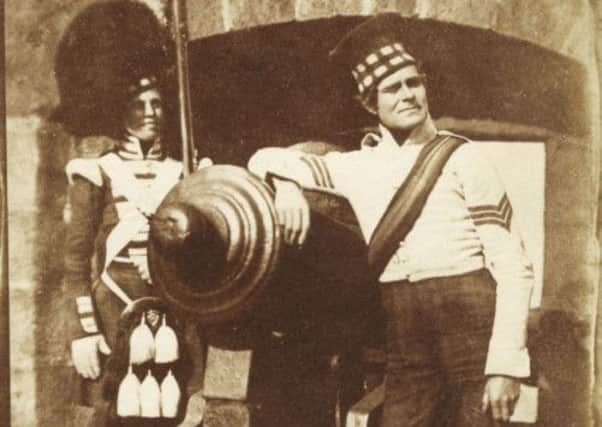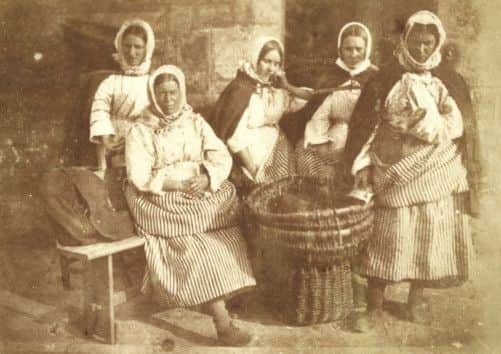Scotland in some of world’s first photographs


The images are the work of David Octavius Hill and Robert Adamson, creators of Scotland’s first photographic studio, and date back 170 years to the early 1840s.
They include some of the earliest photos of Edinburgh including John Knox House and the Scott Monument still in construction, as well as views of Adamson’s home town, St Andrews, in Fife.
Advertisement
Hide AdThe collection also includes the images of a sergeant and private of the Gordon Highlanders at Edinburgh Castle and fishwives in St Andrews.


Other notable images include portraits of central figures of the First General Assembly of the Free Church of Scotland, which Hill used to create his famous painting of the event – the world’s first work of art painted with the help of photographs.
The 17 pictures, which auctioneers say are in remarkably good condition, will be sold at Bonhams in London on 12 November, when experts believe they could soar beyond their £20,000 estimate.
Matthew Haley, Bonhams head of books and historic photographs, said yesterday: “Hill and Adamson were among the world’s first professional photographers, and these are among the first photographs.
“Edinburgh and St Andrews are particularly lucky to have been documented at this early stage, when photography was in its infancy. Hill and Adamson were breaking new ground.
“The image of fishwives in St Andrews baiting their lines is fabulous. It is designed to look like a snapshot in time, but actually it would have been carefully staged. The people in these pictures may never have seen a photograph before. They had no conception of how important they were.
Advertisement
Hide Ad“The market for 19th-century photographs is truly international. There is a huge market for early photography in America, the Middle East and beyond.
“We have valued them at around £20,000 but we might see fireworks.”
Advertisement
Hide AdA highlight of the set features a sergeant and private of the 42nd Gordon Highlanders by a cannon at Edinburgh Castle taken in 1846 before the regiment moved to Ireland.
For their photograph of the Scott Monument in construction in 1844, the photographers hoisted themselves and their equipment on to the roof of what is now the Royal Scottish Academy to get a clear view.
The set also includes photographs of clergymen present at the Disruption Assembly in 1843 when more than 450 ministers walked out of the Church of Scotland assembly and down to another Edinburgh assembly hall to found the Free Church of Scotland. Hill, who was present at the historic event, decided to record the dramatic scene and used photography to get likenesses of all the ministers involved.
The photographs – which are salt paper prints from calotype negatives – include the central figure, the Rev Dr Thomas Chalmers, the leader of the Free Church of Scotland, dubbed Scotland’s greatest 19th-century churchman.
Photographs of St Andrews include the fore tower of the castle, the abbey wall, the entrance to the cathedral precinct and South Street with W Smith’s chemist shop and the town church.
Mr Haley said: “Photographs are inherently fragile, and examples from the 1840s are very rare, particularly in such fine condition.
Advertisement
Hide Ad“They have not been displayed or exposed to the light, and may have been in an envelope for the last 150 years. Had they been mounted and framed, the images might almost be invisible now.
“For so many to become available together is unusual.”
Perth-born painter Hill joined St Andrews engineer Robert Adamson in 1843 to form Scotland’s first photographic studio.
Advertisement
Hide AdThey produced “the first substantial body of self-consciously artistic work using the newly invented medium of photography”.
Their brief partnership ended with Adamson’s untimely death in 1848. Hill continued to photograph and paint until his death in 1870, aged 67.